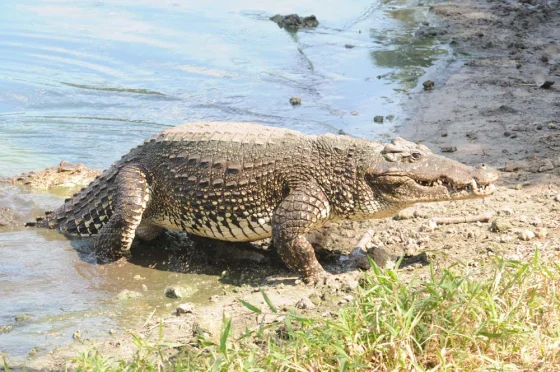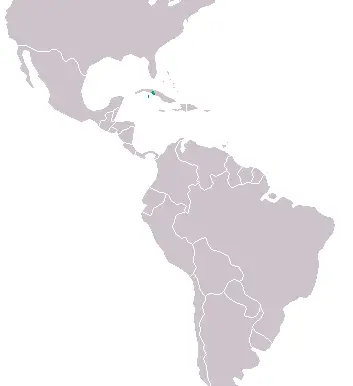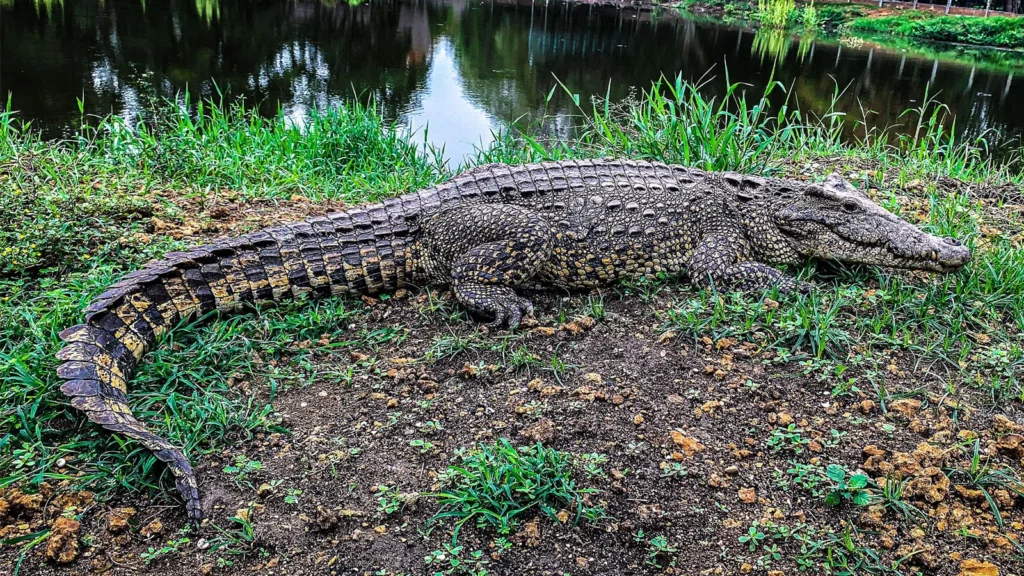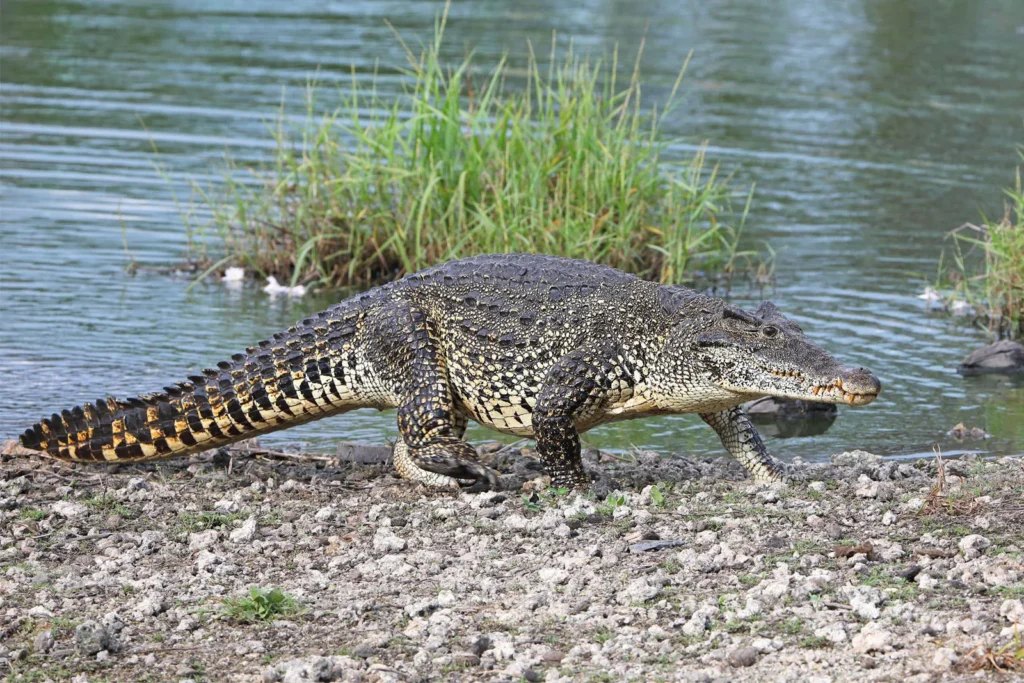Crocodile Cuban (Crocodylus rhombifer) is one of the rarest and most unique members of the crocodile family. It's there Endemic to Cuba, and its range is limited to only two places: Zapata Nature Reserve and Lanier Swamp.
This species is known for its exceptional aggressiveness, great intelligence, and highly developed limbswhich allow it not only to swim, but also to move quite quickly on land.
In this article, we will take a closer look at biological features, behavior, habitat, food habits, threats to the population and interesting facts about this rare reptile.

Scientific classification
🔬 Classification of the Cuban crocodile:
✔ The Kingdom: Animals (Animalia)
✔ Type: Chordal (Chordata)
✔ Class: Reptiles (Reptilia)
✔ Row: Crocodile-like (Crocodylia)
✔ Family: Crocodile trees (Crocodylidae)
✔ Gender: Crocodiles (Crocodylus)
✔ View: Crocodile Cuban (Crocodylus rhombifer)
📌 Interesting!
Genetic studies have shown that the Cuban crocodile it is one of the most evolutionarily unique crocodiles in the world.
Appearance and features
💠 Description of the Cuban crocodile:
• Sizes: Adults reach 2.1-2.5 malthough the largest ones can reach up to 3.5 m.
• Weight: On average 70-80 kg, but large males can weigh over 200 kg.
• Colour: Dark green or yellowish, with black diamond-shaped spots on the back.
• Muzzle shape: Very short and widewhat sets it apart from other crocodiles.
• Footboard: Strong, with well-developed paws, which allows it to actively move on land.
📌 Interesting!
This best crocodile runner ever! Thanks to its strong limbs, it can jump and run at speeds of up to 17 km / h.

Habitat range
🌍 Where does the Cuban crocodile live?
* Natural range very limited and includes only Zapata Swamp (western Cuba) and Lanye Swamp (island of youth).
* Likes fresh water bodies, such as swamps, lakes, and rivers.
* Unlike the American crocodile, avoids salt water.
📌 Interesting!
Previously, this species was distributed throughout Cuba, Haiti and the Bahamas, but due to hunting and habitat loss its population has been critically reduced.
Behavior and lifestyle
🔹 Territoriality and aggressiveness
• This is one of the most aggressive crocodileswhich actively defends its territory.
* Young individuals can form temporary social groups, but adults live alone.
🔹 Hunting and nutrition
* Hunts both in water and on land.
* Main meal: fish, small mammals, birds, turtles, shellfish.
* Uses smart hunting tactics, such as imitation of a stationary log or waiting for prey near the water.
* In captivity, this crocodile has been observed to have high level of training it can also remember a person's actions.
📌 Interesting!
Cuban crocodiles sometimes they use collective hunting tactics, which is a rare occurrence among reptiles.

Reproduction and development
💡 How do Cuban crocodiles breed?
* Females build nest of plants and sand there is water nearby.
* One masonry contains 30-40 eggsthat are being incubated 2.5-3 months.
* Females actively guarding the nest and they help the cubs get out of the eggs.
* Only a very small number of cubs survive, as they become prey to predators.
📌 Interesting!
Cuban crocodiles sometimes crossbreed with american crocodiles, which creates the problem genetic contamination of the species.
Threats to the species and their protected status
⚠ What threatens the Cuban crocodile?
• Poaching - hunting for skin and meat.
• Habitat destruction - drainage of swamps.
• Hybridization with the American crocodile, which threatens the purity of the species.
🛡 Security status:
, Enabled in IUCN Red List how an endangered species.
✅ There are captive breeding programs and the release of young individuals into the wild.
✅ In Zapata National Park strict population control is in place.
📌 Interesting!
Today in the wild left total 3,000-5,000 individuals of this type.

Conclusion
Crocodile Kubinsky is a unique and rare predator with great intellectual and physical strength. It's there the fastest among crocodiles, very aggressive and hardy.
But due to human activity, this species is threatened with extinction..
💡 Conservation of the Cuban crocodile is not only an environmental issue, but also a responsibility to the natural heritage of the Caribbean region.